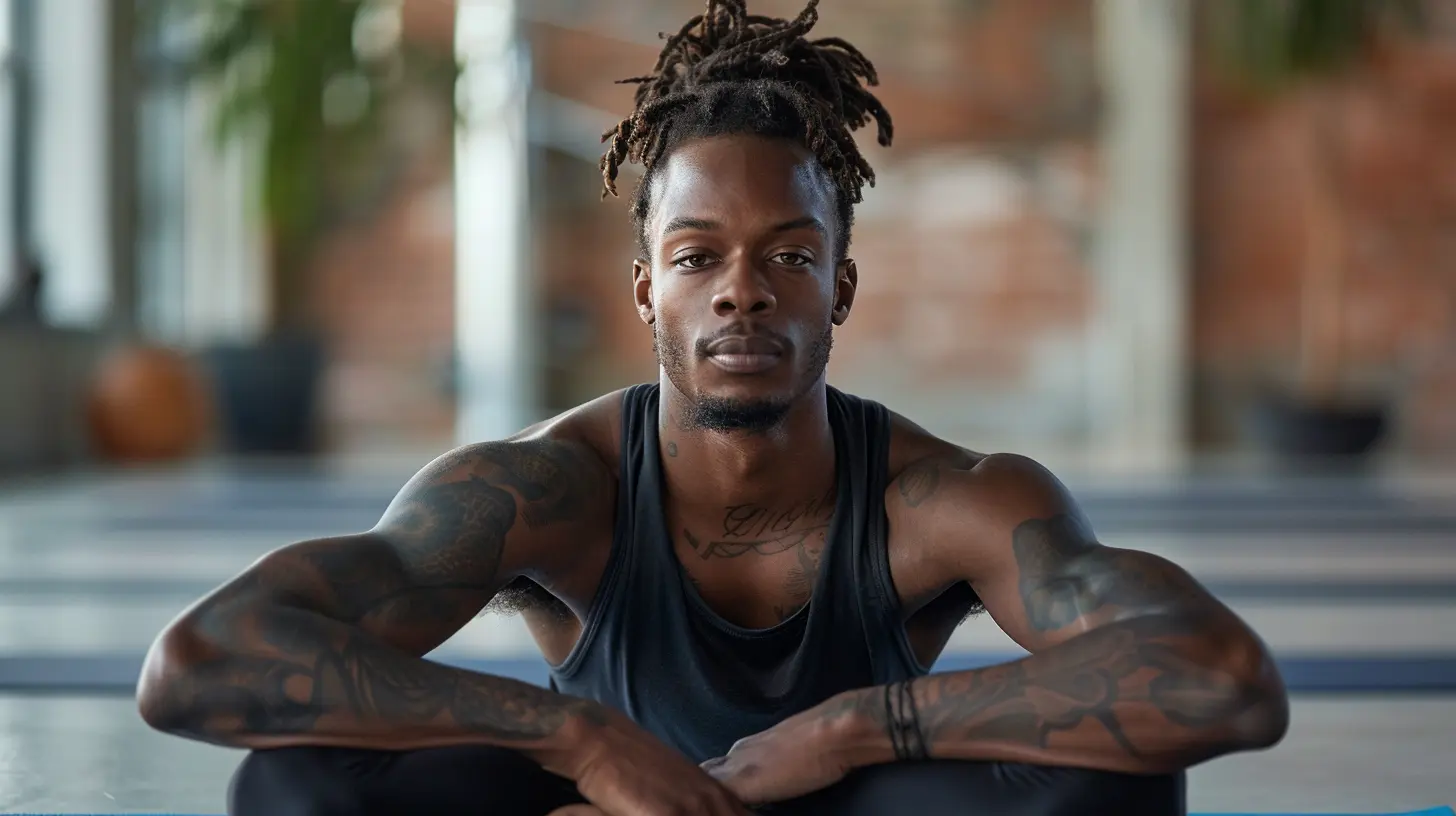The Role of Yoga in Recovery for Injured Athletes
2 November 2025
Getting sidelined by an injury is one of the most frustrating things an athlete can go through. Whether you're a weekend warrior or a full-time pro, injuries don’t just mess with your body—they mess with your mindset too. That’s where yoga comes into the picture. No, we’re not talking about twisting yourself into a pretzel or chanting in Sanskrit. We’re talking about real, practical movement and breathwork that can help your body heal, keep you mentally in the game, and get you back out there stronger than before.
In this post, we’re diving deep into the role of yoga in recovery for injured athletes. It’s more than just stretching—it’s a powerful tool that can speed up healing, ease pain, and even make you a better athlete overall.
Why Injured Athletes Shouldn't Skip Yoga
Okay, so you're hurt. Maybe it's a pulled hamstring, a torn ligament, or just that annoying shoulder pain that won't quit. Whatever it is, sidelining yourself completely and waiting for the pain to vanish isn't always the best strategy.Yoga offers a low-impact, deeply restorative form of movement that keeps your blood flowing, maintains mobility, and helps your mind chill out during the healing process. It’s like giving your body a tune-up while you’re parked in the garage.
Not Just Stretching—It’s Smart Movement
A lot of people think yoga is just stretching, but that couldn’t be further from the truth. Yoga involves controlled, precise movements that are designed to increase strength, improve flexibility, build balance, and enhance coordination. And guess what? Those are all keys to preventing future injuries too.With the right yoga program tailored to your injury, you can gradually rebuild strength and stability in a safe and gentle way.
How Yoga Supports Physical Recovery
Let’s break it down. Here’s how yoga steps up to help athletes bounce back after injury:1. Boosts Circulation for Faster Healing
When you're injured, increased blood flow to the hurting area can speed up the healing process. Yoga encourages this circulation through dynamic movement and deep breathing. Think of it like a delivery system—oxygen, nutrients, and immune cells all get where they need to go faster. That means shorter recovery times and healthier tissues.2. Reduces Inflammation and Pain
Certain yoga poses can help calm the nervous system and reduce inflammation—two things every athlete wants when nursing an injury. Deep breathing and slow, mindful movement trigger your parasympathetic nervous system (the "rest and digest" system), which helps reduce cortisol (that pesky stress hormone that fuels inflammation).3. Restores Range of Motion
After an injury, you might find your joint or muscle just doesn’t move like it used to. Yoga uses gentle, progressive stretching to safely increase mobility. This is crucial when you're getting back to training and need full range of motion for top performance.4. Rebuilds Strength Without Adding Stress
One of the best things about yoga is that it lets you build strength using only your body weight. You're not loading up a barbell or pounding pavement. You're using slow, controlled movement to recruit stabilizing muscles that often get ignored—perfect when you're trying to rebuild without risking re-injury.
Yoga’s Mental Recovery Benefits (Yep, They Matter Too)
Let’s not pretend that physical recovery is the only battle. Being injured is mentally exhausting, especially for athletes who are used to pushing themselves hard. Yoga offers some serious mental health perks that are just as important as the physical stuff.1. Eases Anxiety and Stress
If your schedule normally revolves around training, competition, or just that sweet post-workout endorphin rush, being benched can feel like a total identity crisis. Yoga teaches mindfulness—aka, being present without judgment. This helps reduce anxiety, calm your thoughts, and keep you grounded while your body heals.2. Builds Patience (Seriously, This Helps)
No athlete likes being told to sit still and wait. But yoga helps teach patience through breathwork and stillness. It’s not just good for your recovery—it’s good for your personal growth as an athlete.3. Strengthens Focus and Self-Awareness
Yoga makes you more in tune with your body. You’ll become more aware of what feels right, what feels off, and how to listen to the signals your body gives you. This heightened awareness can make a huge difference when you're easing back into regular training after an injury.
Best Types of Yoga for Injured Athletes
If you’re imagining power yoga with a room full of sweaty bodies and headstands—hold that thought. When you're recovering, not all yoga is created equal.Here are some athlete-friendly yoga styles that are gentle on the body and big on benefits:
1. Restorative Yoga
This type of yoga uses props like bolsters, blankets, and blocks to support your body in passive poses. The goal is deep relaxation—not effort. It's great for reducing stress, relieving pain, and easing tension in sore or tight muscles.2. Yin Yoga
In Yin, you’ll hold poses for a longer time (think 3–5 minutes) to target deep connective tissues. This is ideal for restoring joint mobility and flexibility without the strain of more active forms of movement.3. Gentle Hatha Yoga
Hatha yoga focuses on slow, deliberate movement paired with breath. It’s perfect if you want to stay active during recovery without overloading your body.Yoga Poses to Try (Even If You're Banged Up)
You don’t need a whole hour-long yoga class to start seeing benefits. A few key poses can go a long way. Just make sure to consult your doctor or physical therapist before jumping into any new movements—especially if your injury is fresh.Here are a few athlete-approved poses that are gentle yet effective:
- Child’s Pose (Balasana): Relieves tension in the lower back and hips.
- Cat-Cow Pose (Marjaryasana-Bitilasana): Improves spinal mobility and loosens up your back.
- Bridge Pose (Setu Bandhasana): Builds glute and hamstring strength; great for lower-body rehab.
- Legs-Up-The-Wall (Viparita Karani): Boosts circulation and reduces swelling in the legs.
- Supine Twist: Helps restore spinal rotation and eases back tightness.
And here’s the best part: You don’t even have to be standing or sweating to benefit from these.
Tips for Using Yoga as Part of Your Recovery Plan
Before you roll out your mat, keep these tips in mind:Start Slow and Listen to Your Body
This ain't a race. Your body will give you signals—respect them. If something hurts (and not in a “good stretch” kind of way), stop or modify.Breathe With Intention
It might sound silly, but your breath is a powerful healing tool. Deep, controlled breathing can calm your nervous system and reduce pain perception.Consistency Beats Intensity
A little yoga every day is better than one intense session a week. Keep it light, keep it regular, and watch the magic happen.Combine Yoga With Your Rehab Plan
Don’t skip physical therapy or doctor’s orders. Instead, think of yoga as a complementary layer in your recovery toolkit. Like avocado on toast—it makes everything better.Long-Term Benefits for Athletes (Even After You're Healed)
Here’s the kicker—yoga isn’t just for recovery. Once you’re back in action, keeping yoga in your weekly routine can offer long-term perks like:- Better body awareness (helps you avoid future injuries)
- Faster recovery between workouts
- Improved flexibility and mobility
- Enhanced breathing technique for endurance
- Mental sharpness during performance
So yeah, it’s not just a “rehab” thing. It’s an “every athlete should be doing this” thing.
Real Talk: Yoga Doesn’t Replace the Work, It Enhances It
Let’s be clear—you still need to put in the work. Physical therapy, proper nutrition, rest, and gradual return to training are all essential pieces of the recovery puzzle. But yoga is like the glue that holds those pieces together.It’s the secret sauce that keeps your muscles loose, your mind right, and your body ready for action.
And once you’ve experienced how much better you feel (inside and out), you’ll wonder why you didn’t start sooner.
Final Thoughts
Look, injuries suck. We all know it. But they don’t have to be the end of your game. With patience, consistency, and the healing power of yoga, you can come back feeling better, stronger, and more in tune with your body than ever.So don’t roll your eyes at the mat—roll out the mat. Your future self will thank you.
all images in this post were generated using AI tools
Category:
YogaAuthor:

Ruben McCloud

